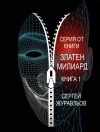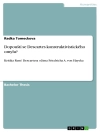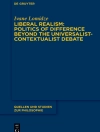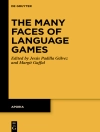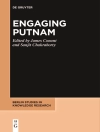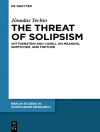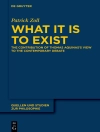This book provides an extensive overview and analysis of current work on semiotics that is being pursued globally in the areas of literature, the visual arts, cultural studies, media, the humanities, natural sciences and social sciences. Semiotics—also known as structuralism—is one of the major theoretical movements of the 20th century and its influence as a way to conduct analyses of cultural products and human practices has been immense.
This is a comprehensive volume that brings together many otherwise fragmented academic disciplines and currents, uniting them in the framework of semiotics. Addressing a longstanding need, it provides a global perspective on recent and ongoing semiotic research across a broad range of disciplines.
The handbook is intended for all researchers interested in applying semiotics as a critical lens for inquiry across diverse disciplines.
Tabella dei contenuti
Section 1: Historical and Conceptual Foundations of Semiotics.- Chapter 1: Semiotics “Today”: The 20th Century Founding and 21st Century Prospects.- Chapter 2: Maps, Diagrams, and Signs: Visual Experience in Peirce’s Semiotics.- Chapter 3: Semiotics as an Interdisciplinary Science.- Chapter 4: The Semiotic Paradigm View of Theoretical Semiotics.- Chapter 5: Visions of the Other and Free Indirect Speech in Artistic Discourse. Bakhtin, Pasolini, Deleuze.- Chapter 6: C. S. Peirce and Intersemiotic Translation.- Chapter 7: Welby’s Significs, Its Developments and International Ramifications. Section 2: Language, Literature and Semiotics.- Chapter 8: Crafting the Literature of Semiotic Possibility: From the Metaphysical to the Detective Story in The Name of the Rose.- Chapter 9: The Emergence of ‘Atomodoxy’ in Cold-War Rhetoric and Science Fiction Narratives: Fear, Threats, and the Duties of Citizenship in an Atomic Age.- Chapter 10: The Semiotics of “Monk” Rehearsals: A Weaving of Two Texts.- Chapter 11: Deviant Orthography.- Chapter 12: Semiotics of Translation: An Interdisciplinary Approach to Translation.- Chapter 13: Intersemiotic Translation and Transfer Theory in Cinematic/Audiovisual Adaptations of Greek Drama.- Section 3: Media, Communications, and Semiotics.- Chapter 14: The Brand as an Economic Value and a Sign: Positioning as an Instrument for Creating Market Distinctions.- Chapter 15: Understanding the Codes and Assumptions of New Media.- Chapter 16: The Semiotics of Innovation.- Chapter 17: Multimodal Digital Humanities.- Chapter 18: Semiotics of Photography. The State of the Art.- Chapter 19: The Semiotics of the Mass Media.- Chapter 20: Problems of Contemporary Architectural Graphics.- Section 4: Biosemiotics.- Chapter 21: Introduction to Biosemiotics.- Chapter 22: Oikos: The Sign of Nature.- Chapter 23: Waves of Semiosis. Is It about Time? On The Semiotic Anthropology of Change.- Chapter 24: Embodied Signs: Expanding Representations through and with Bodies.- Chapter 25: Face as a Sign and Paolo Manteggaza’s Theory of Metoposcopy.- Chapter 26: Feeling and Meaning: A Unitary Bio-Semiotic Account.- Chapter 27: Preserving spaces of uncertainty: Bioremediation, urbanism and the sporting spectacle.- Chapter 28: What Does Your Garden Show? Explorations of the semiotics of the garden.- Chapter 29: Semiotics of Food.- Section 5: Society, Culture, and Semiotics.- Chapter 30: Semiotics of Culture(s). Basic Questions and Concepts.- Chapter 31: Signs, Language and Life: Pathways and Perspectives in Augusto Ponzio’s Scientific Research.- Chapter 32: Even Signs Must Burn: From Semiotics and the Modern City to Jean Baudrillard’s Symbolic Exchange and the Postmodern City.- Chapter 33: Musical Performance in a Semiotic Key.- Chapter 34: Cartosemiotics.- Chapter 35: From to Semiosis to Semioethics.- Chapter 36: Seeing “What We See”: Beyond Projection and Representation of Criminality in Mainstream Media.- Chapter 37: Applied Cultural Semiotics, Interculturality and Action-Research.- Chapter 38: Reading the Subject of History: From Semiology to Poststucturalism.- Chapter 39: Identity Today and the Critical Task of Semioethics.- Chapter 40: The Street: The Ultimate Locus of Political Intervention in Modern Democracy.- Section 6: Cybernetics, Systems, and Semiotics.- Chapter 41: Sign functions in natural and artificial systems.- Chapter 42: Semiotic Modeling: A Pragmaticist’s Guide.- Chapter 43: Semiotics of Computing: Filling the gap between humanity and mechanical inhumanity.- Chapter 44: Standing on the Shoulders of Giants. A Semiotic Analysis of Assassin’s Creed 2.- Chapter 45: Virtual Worlds as Marketing Environments: The Case of Second Life.- Section 7: Cognitive Semiotics.- Chapter 46: Cognitive Semiotics.- Chapter 47: Embodied Semiosis: Autistic ‘Stimming’ as Sensory Praxis.- Chapter 48: Heterarchical semiosis: From signal-transduction to narrative intelligibility.- Chapter49: From Semantics to Narrative: The Semiotics of A. J. Greimas.- Chapter 50: Τhe Spectastor’s Reality: A Revision of Screen Space Aesthetics through Cognitive Film Semiotics.- Chapter 51: Semiosis: The Dialectics of Cognition.- Chapter 52: Text and Images.- Section 8: Education and Semiotics.- Chapter 53: Becoming a ‘Mythologist’: Barthes’ Mythologies and Education.- Chapter 54: Edusemiotics and the language of images.- Chapter 55: Semiotics of Western Education.- Chapter 56: Capitalists’ Profitable Virtual Worlds: Roles for Science & Science Education.- Chapter 57: It’s like you’re a teacher!: A social semiotic analysis of authority relations among high school mathematics students.- Chapter 58: “If you could see what I see”: the Semiotics of “Invisibility” in Pedagogy and Practice.- Chapter 59: A Patriot is Respectful: (Re-)Examining the Architecture of Ideology in Educational Contexts.- Chapter 60: The Emergence of Signs in Hands-On Science.- Chapter 61: Extending students’ semiotic understandings: Learning about and creating multimodal texts.
Circa l’autore
Peter Pericles Trifonas is Professor at the Ontario Institute for Studies in Education/University of Toronto. His areas of interest include ethics, philosophy of education, cultural studies, literacy, and technology. Among his books are the following: Revolutionary Pedagogies: Cultural Politics, Instituting Education, and the Discourse of Theory, The Ethics of Writing: Derrida, Deconstruction, and Pedagogy, Ethics, Institutions and The Right to Philosophy (with Jacques Derrida), Roland Barthes and the Empire of Signs, Umberto Eco & Football, Pedagogies of Difference, Deconstructing the Machine (with Jacques Derrida), International Handbook of Semiotics, Counter Texts: Reading Culture.


